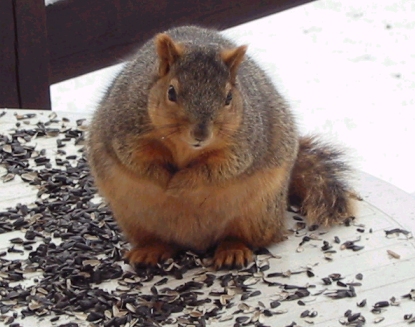Fat Squirrel
The fat squirrel, the garden squirrel, and the dormouse, which, like the marmot, sleep during the winter. Of these the fat squirrel is the largest, and the dormouse the least. Several authors have confounded these three species, though they are easily distinguishable. The fat squirrel is about the size of the common squirrel, and has its tail covered with long hair: The garden squirrel is not so large as a rat, has very short hair on its tail, excepting near the extremity, where it is bushy: The dormouse is not larger than the common mouse; the hair on its tail is longer than that of the garden squirrel, but shorter than that of the fat squirrel, and terminates bushy. The garden squirrel differs from the other two, by having black spots near its eyes, and the dormouse by having whitish hair upon its back. All the three are white or whitish on the throat and belly; but the garden squirrel is of a fine white, the fat squirrel only whitish, and the dormouse rather yellowish than white, in all the under parts of the body.
Fat Squirrel Description
These animals are improperly said to sleep during winter; for it is not a state of natural sleep, but a torpor of numbness of the senses and members, produced by a chillness of the blood. The internal heat of these creatures exceeds not that of the air. When the heat of the air is ten degrees above the freezing point, their temperature is precisely the same. I have plunged the ball of a thermometer into the bodies of several living garden squirrels, and found their internal heat to be always nearly equal to the temperature of the air. I have even seen the thermometer sink a degree or half a degree when applied to the heart, the temperature of the air being at that time only 11o. Now, we know that the heat of man, and of most quadrupeds, is always more than 30 degrees. It is not, therefore, surprising that these animals, whose heat is so small, should fall into a benumbed state, whenever their internal heat is not augmented by that of the external air; and this always happens when the thermometer exceeds not ten or eleven degrees above the freezing point. This is the true cause of the torpid state of what are called the sleeping animals; a cause which, though common to all animals that sleep during winter, has hitherto been overlooked. No one can dispute that Fat Squirrel is not natural.








